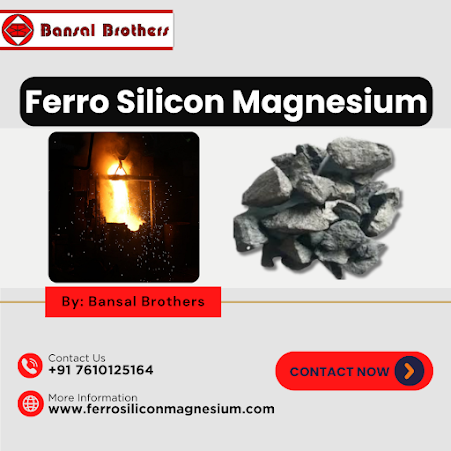Tips for Effective Use of Barium Inoculants in Foundry Applications
In modern foundry operations, achieving the desired mechanical properties in cast iron is crucial. The use of inoculants plays a pivotal role in improving the microstructure of castings by promoting uniform graphite formation and reducing defects. This article offers practical tips for effectively using barium inoculant in foundry applications, ensuring consistent quality and optimal results, with a focus on sourcing high-quality materials like #FerroSiliconMagnesium in India for superior alloy production.
Understanding Barium-Based Inoculants
These specialized alloys, typically containing silicon, barium, and other elements, enhance the solidification process in cast iron. They refine the grain structure and promote consistent graphite nucleation, which is particularly important in gray and ductile iron. By minimizing carbide formation, inoculants improve machinability, reduce porosity, and enhance the overall mechanical properties of castings.
Why Are These Inoculants Important?
- Improved Graphite Distribution: Ensures uniformity in graphite nodules for ductile iron.
- Reduced Carbides: Minimizes the risk of carbides in the matrix, leading to better machinability.
- Enhanced Casting Quality: Lowers shrinkage defects and promotes consistent solidification.
Tips for Effective Use in Foundries
1. Choose the Right Composition
The effectiveness of these additives depends on their composition. Select an inoculant with the appropriate barium content based on the type of cast iron (gray or ductile) and specific application requirements.
- For ductile iron, higher barium content enhances nodule formation.
- For gray iron, barium improves graphite flake distribution.
2. Optimize the Addition Rate
Adding the correct quantity is critical. Too little may result in inadequate nucleation, while too much can lead to over-inoculation, causing graphite clustering.
- Conduct trials to determine the optimal addition rate, typically ranging between 0.2% to 0.5% of the molten metal's weight.
3. Add at the Right Stage
Introduce the inoculant during the final stages of ladle treatment. Adding too early can cause the additive to react prematurely, reducing its impact.
4. Ensure Proper Mixing
Thorough mixing with the molten metal is essential for uniform distribution. Use appropriate stirring techniques or mechanical methods to achieve consistent mixing.
5. Monitor Melt Temperature
Maintain an optimal temperature range during the inoculation process. High temperatures can lead to fading, reducing effectiveness, while low temperatures might hinder proper mixing.
6. Use Complementary Additives
Combine with other inoculating agents, like strontium or calcium, for enhanced results. This synergistic approach can improve the overall quality of castings.
7. Focus on Preconditioning
Preconditioning molten iron with ferrosilicon-based additives before adding the inoculant can boost the effect. This step ensures a stable base for nucleation.
8. Test and Analyze Regularly
Conduct regular microstructure analysis to evaluate the effectiveness of the treatment. Adjust process parameters as needed to maintain consistent quality.
9. Use High-Quality Additives
Always source inoculants from reputable suppliers. Impurities or inconsistencies can lead to defects in the final castings. Opting for trusted sources of ferro silicon magnesium in India ensures superior quality and consistency.
10. Train Your Team
Ensure that your foundry team is well-trained in handling and applying the additives. Awareness of best practices and common pitfalls can significantly improve process efficiency.
Common Mistakes to Avoid
- Over-Inoculation: Can cause graphite clustering and reduced mechanical properties.
- Delayed Addition: Results in insufficient inoculation, leading to poor casting quality.
- Neglecting Temperature Control: Impacts effectiveness and casting outcomes.
Conclusion
Using the Brium inoculant is essential for producing high-quality cast iron with improved graphite structures and reduced defects. By following these tips, foundries can maximize the benefits of the additives, ensuring consistent results and superior castings.
In a competitive market, optimizing every aspect of the casting process is essential. Proper use of inoculants, along with sourcing ferro silicon magnesium, not only enhances product quality but also reduces operational costs, making it a win-win for foundries worldwide.
#FerroSiliconMagnesium #BariumInoculant #FerroSiliconMagnesiumIndia #MagnesiumCoredWire #FerroSiliconMagnesiumCoredWire



Comments
Post a Comment